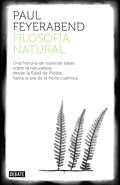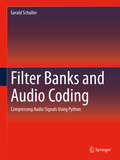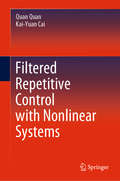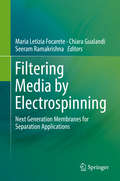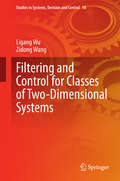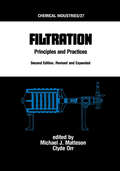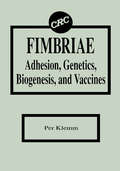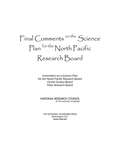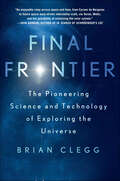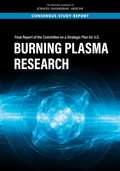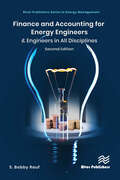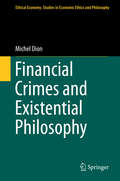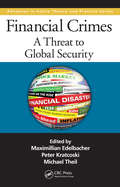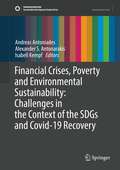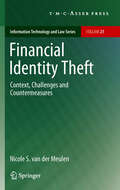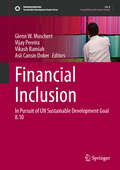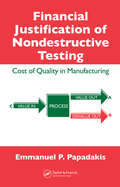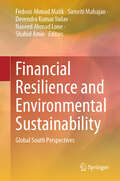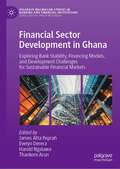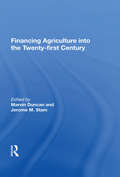- Table View
- List View
Filling and Wrapping: Three-Dimensional Measurement
by Glenda Lappan James T. Fey Susan N. Friel Elizabeth Difanis PhillipsNIMAC-sourced textbook
Filosofía natural: Una historia de nuestras ideas sobre la naturaleza
by Paul FeyerabendUna historia de nuestras ideas sobre la naturaleza desde la Edad de Piedra hasta la era de la física cuántica. La obra póstuma de Paul Feyerabend, uno de los filósofos más importantes del siglo XX. Paul Feyerabend fue uno de los científicos más originales y controvertidos de su tiempo. Su «todo vale» se ha convertido en un lema, y la claridad en la exposición de sus ideas atrajo al público dentro y fuera de las universidades. Filosofía natural pretende reconstruir la historia de las concepciones humanas de la naturaleza desde sus primeras expresiones en las pinturas rupestres de la Edad de Piedra hasta las discusiones del siglo XX sobre física nuclear. Publicada con más de treinta años de retraso, fue concebida originalmente como una obra en tres tomos que nunca llegaron a escribirse. El manuscrito se dio por perdido durante mucho tiempo, hasta que una copia mecanografiada apareció en los archivos de la Universidad de Constanza. Paul Feyerabend examina el significado de los mitos desde los albores de la filosofía natural hasta Parménides, y centra sus reflexiones en el crecimiento devastador del racionalismo durante la antigüedad griega y la consecuente separación del hombre y la naturaleza. Reseña:«El texto póstumo de Paul Feyerabend animará a buscar una nueva interpretación de la naturaleza y una mejor forma de vivir.»Neue Zürcher Zeitung
Filter Banks and Audio Coding: Compressing Audio Signals Using Python
by Gerald SchullerThis textbook presents the fundamentals of audio coding, used to compress audio and music signals, using Python programs both as examples to illustrate the principles and for experiments for the reader. Together, these programs then form complete audio coders. The author starts with basic knowledge of digital signal processing (sampling, filtering) to give a thorough introduction to filter banks as used in audio coding, and their design methods. He then continues with the next core component, which are psycho-acoustic models. The author finally shows how to design and implement them. Lastly, the author goes on to describe components for more specialized coders, like the Integer-to-Integer MDCT filter bank, and predictive coding for lossless and low delay coding. Included are Python program examples for each section, which illustrate the principles and provide the tools for experiments.Comprehensively explains the fundamentals of filter banks and audio coding;Provides Python examples for each principle so that completed audio coders are obtained in the language;Includes a suite of classroom materials including exercises, experiments, and examples.
Filterbänke und Audiocodierung: Komprimierung von Audiosignalen mit Python
by Gerald SchullerDieses Lehrbuch stellt die Grundlagen der Audiocodierung vor, die zur Komprimierung von Audio- und Musiksignalen verwendet wird. Dabei werden Python-Programme sowohl als Beispiele zur Veranschaulichung der Prinzipien als auch für Experimente für den Leser verwendet. Zusammen bilden diese Programme dann komplette Audiocodierer. Der Autor beginnt mit grundlegenden Kenntnissen der digitalen Signalverarbeitung (Abtastung, Filterung), um eine gründliche Einführung in Filterbänke, wie sie in der Audiocodierung verwendet werden, und deren Entwurfsmethoden zu geben. Er fährt dann mit der nächsten Kernkomponente fort, den psycho-akustischen Modellen. Der Autor zeigt schließlich, wie man sie entwirft und implementiert. Schließlich beschreibt der Autor Komponenten für speziellere Kodierer, wie die Integer-to-Integer MDCT-Filterbank und prädiktive Kodierung für verlustfreie und verzögerungsarme Kodierung. Zu jedem Abschnitt gibt es Python-Programmbeispiele, die die Prinzipien veranschaulichen und die Werkzeuge für Experimente bereitstellen. Umfassende Erläuterung der Grundlagen von Filterbänken und Audiocodierung; Bietet Python-Beispiele für jedes Prinzip, so dass fertige Audiocodierer in der Sprache erhalten werden; Enthält eine Reihe von Unterrichtsmaterialien mit Übungen, Experimenten und Beispielen.
Filtered Repetitive Control with Nonlinear Systems
by Quan Quan Kai-Yuan CaiThough there have been significant advances in the theory and applications of linear time-invariant systems, developments regarding repetitive control have been sporadic. At the same time, there is a dearth of literature on repetitive control (RC) for nonlinear systems.Addressing that gap, this book discusses a range of basic methods for solving RC problems in nonlinear systems, including two commonly used methods and three original ones. Providing valuable tools for researchers working on the development of repetitive control, these new and fundamental methods are one of the major features of the book, which will benefit researchers, engineers, and graduate students in e.g. the field of control theory.
Filtering Media by Electrospinning: Next Generation Membranes For Separation Applications
by Seeram Ramakrishna Chiara Gualandi Maria Letizia FocareteThis book covers the state-of-the-art on electrospun materials for the use of filters for water remediation, ion-exchange membranes and affinity membranes for the capture of selected chemical and biochemical species, as well as filtering applications covering air treatment, defense and protective applications, and oil-water separation. The book also provides an overview of the landscape of marketed electrospun filters and of technical approaches for the large scale production of nanofibrous non-woven filter media. This is an ideal book for biomaterials and polymer researchers interested in the applications of filtering media by electrospinning.This book also:Covers the latest research on ion-exchange membranes and affinity membranes for capture of cells and biological substancesBroadens reader understanding of antimicrobial electrospun filters and sieving filters for liquid microfiltrationReviews exhaustively the key recent research into electrospun filters for oil-water separation, heavy metals removal, and defense and protective applications
Filtering and Control for Classes of Two-Dimensional Systems
by Zidong Wang Ligang WuThis book focuses on filtering, control and model-reduction problems for two-dimensional (2-D) systems with imperfect information. The time-delayed 2-D systems covered have system parameters subject to uncertain, stochastic and parameter-varying changes. After an initial introduction of 2-D systems and the ideas of linear repetitive processes, the text is divided into two parts detailing: · General theory and methods of analysis and optimal synthesis for 2-D systems; and · Application of the general theory to the particular case of differential/discrete linear repetitive processes. The methods developed provide a framework for stability and performance analysis, optimal and robust controller and filter design and model approximation for the systems considered. Solutions to the design problems are couched in terms of linear matrix inequalities. For readers interested in the state of the art in linear filtering, control and model reduction, Filtering and Control for Classes of Two-Dimensional Systems will be a useful reference for exploring the field of 2-D systems either from a purely theoretical research perspective or from the point of view of a multitude of potential applications including image processing, and the study of seismographic data or thermal processes.
Filtering and System Identification
by Michel Verhaegen Vincent VerdultFiltering and system identification are powerful techniques for building models of complex systems. This 2007 book discusses the design of reliable numerical methods to retrieve missing information in models derived using these techniques. Emphasis is on the least squares approach as applied to the linear state-space model, and problems of increasing complexity are analyzed and solved within this framework, starting with the Kalman filter and concluding with the estimation of a full model, noise statistics and state estimator directly from the data. Key background topics, including linear matrix algebra and linear system theory, are covered, followed by different estimation and identification methods in the state-space model. With end-of-chapter exercises, MATLAB simulations and numerous illustrations, this book will appeal to graduate students and researchers in electrical, mechanical and aerospace engineering. It is also useful for practitioners. Additional resources for this title, including solutions for instructors, are available online at www. cambridge. org/9780521875127.
Filtration and Purification in the Biopharmaceutical Industry, Third Edition (Drugs and the Pharmaceutical Sciences)
by Maik W. JornitzSince sterile filtration and purification steps are becoming more prevalent and critical within medicinal drug manufacturing, the third edition of Filtration and Purification in the Biopharmaceutical Industry greatly expands its focus with extensive new material on the critical role of purification and advances in filtration science and technology. It provides state-of-the-science information on all aspects of bioprocessing including the current methods, processes, technologies and equipment. It also covers industry standards and regulatory requirements for the pharmaceutical and biopharmaceutical industries. The book is an essential, comprehensive source for all involved in filtration and purification practices, training and compliance. It describes such technologies as viral retentive filters, membrane chromatography, downstream processing, cell harvesting, and sterile filtration. Features: Addresses recent biotechnology-related processes and advanced technologies such as viral retentive filters, membrane chromatography, downstream processing, cell harvesting, and sterile filtration of medium, buffer and end product Presents detailed updates on the latest FDA and EMA regulatory requirements involving filtration and purification practices, as well as discussions on best practises in filter integrity testing Describes current industry quality standards and validation requirements and provides guidance for compliance, not just from an end-user perspective, but also supplier requirement It discusses the advantages of single-use process technologies and the qualification needs Sterilizing grade filtration qualification and process validation is presented in detail to gain the understanding of the regulatory needs The book has been compilated by highly experienced contributors in the field of pharmaceutical and biopharmaceutical processing. Each specific topic has been thoroughly examined by a subject matter expert.
Filtration: Principles and Practices, Second Edition, Revised and Expanded
by MattesonCompletely revised and updated, this Second Edition of the critically acclaimed referenceprovides the very latest theoretical and practical data on filtration of gases and liquids.Filtration: Principles and Practices, Second Edition, Revised and Expanded features severalall-new chapters which detail filtration in the mineral industry, high-efficiency air filtration,cartridge filters, and ultrafiltration.The most authoritative and comprehensive guide to essential, state-of-the-art data, Filtration:Principles and Practices, Second Edition, Revised and Expanded is an indispensable referencefor industrial process and chemical engineers and scientists engaged in research, development,and production in the chemical, mineral, food, beverage, and pharmaceutical industries. Itis also a valuable reference for upper-level undergraduate and graduate students in chemicalengineering courses in unit operations.
Fimbriae Adhesion, Genetics, Biogenesis, and Vaccines
by Per KlemmFimbriae are the best-studied bacterial colonization factors. They are of paramount importance in bacterial pathogenesis and microbial ecology. Due to the advent of new and powerful techniques, an impressive amount of information has been accumulated on these important surface organelles over the last decade. The first book of its kind, Fimbriae brings together into one volume the state of the art of this very active field. Internationally recognized researchers give both a horizontal and lateral approach to fimbriology. Selected types of fimbriae are extensively reviewed and fundamental questions such as evolution, control or regulation, biogenesis, bacteria-host interaction, and fimbriae-based vaccines are examined.
Final Comments on the Science Plan for the North Pacific Research Board
by National Research Council of the National AcademiesThe North Pacific Research Board (NPRB) was established by Congress in 1997 to recommend marine research activities to the Secretary of Commerce on or relating to the fisheries or marine ecosystem in the North Pacific Ocean, Bering Sea, Arctic Ocean, and related bodies of water. NPRB called on the National Academies to develop a comprehensive long range science plan pertaining to its research activities. This assistance has been provided in two phases. In phase one, beginning in early 2003, a National Academies committee worked to understand the purpose of the NPRB, gather information to help identify research needs, and provide advice on the components of a sound science plan. The committee's assessment is contained in a report released in early 2004, Elements of a Science Plan for the North Pacific Research Board. With this guidance as a tool, the NPRB staff, Science Panel, and Advisory Panel worked together to write a draft science plan to steer the program in the coming decade. During the second phase, the same committee reviewed the NPRB's draft science plan and provided final feedback to the NPRB. It is a focused review, generally following the organization of the NPRB document. This report is intended primarily as a direct communication from the committee to those planning the NPRB's programs, to help them improve the science plan and ensure successful implementation.
Final Frontier: The Pioneering Science and Technology of Exploring the Universe
by Brian CleggStar Trek was right — there is only one final frontier, and that is space...Human beings are natural explorers, and nowhere is this frontier spirit stronger than in the United States of America. It almost defines the character of the US. But the Earth is running out of frontiers fast.In Brian Clegg's The Final Frontier we discover the massive challenges that face explorers, both human and robotic, to uncover the current and future technologies that could take us out into the galaxy and take a voyage of discovery where no one has gone before… but one day someone will. In 2003, General Wesley Clark set the nation a challenge to produce the technology that would enable new pioneers to explore the galaxy. That challenge is tough — the greatest we've ever faced. But taking on the final frontier does not have to be a fantasy.In a time of recession, escapism is always popular — and what greater escape from the everyday can there be than the chance of leaving Earth's bounds and exploring the universe? With a rich popular culture heritage in science fiction movies, books and TV shows, this is a subject that entertains and informs in equal measure.
Final Report of the Committee on a Strategic Plan for U.S. Burning Plasma Research
by Engineering Medicine National Academies of SciencesFusion offers the prospect of virtually unlimited energy. The United States and many nations around the world have made enormous progress toward achieving fusion energy. With ITER scheduled to go online within a decade and demonstrate controlled fusion ten years later, now is the right time for the United States to develop plans to benefit from its investment in burning plasma research and take steps to develop fusion electricity for the nation’s future energy needs. At the request of the Department of Energy, the National Academies of Sciences, Engineering, and Medicine organized a committee to develop a strategic plan for U.S. fusion research. The final report’s two main recommendations are: (1) The United States should remain an ITER partner as the most cost-effective way to gain experience with a burning plasma at the scale of a power plant. (2) The United States should start a national program of accompanying research and technology leading to the construction of a compact pilot plant that produces electricity from fusion at the lowest possible capital cost.
Finance and Accounting for Energy Engineers: & Engineers in All Disciplines (River Publishers Series in Energy Management)
by S. Bobby RaufThe purpose of this second edition is to provide an overview of important principles in the fields of finance and accounting, and the application of those principles for financial analysis of energy and non-energy capital investments. This book is written as a self-study guide for energy and non-energy engineers and managers who either lack formal training in the subjects of finance, accounting, and engineering economics, or simply need a means to refresh their knowledge in these subjects. This book bridges the gap between the typical business school "MBA" knowledge and its application in enery and non-engergy engineering, project management or manufacturing management. Many energy and non-energy engineers and technical managers feel inadequately equipped to comprehend and apply certain important finance and accounting principles. Understanding of finance and accounting principles is important in interfacing and conducting business with accountants, financial analysts, and members of upper management. This book is designed to familiarize energy engineers and other engineering professionals - in a relatively simple and easy to understand fashion - with decision making skills founded on financial calculations and case study based quantitative analysis.
Financial Crimes and Existential Philosophy
by Michel DionThe aim of this book is to deepen our understanding of financial crimes as phenomena. It uses concepts of existential philosophies that are relevant to dissecting the phenomenon of financial crimes. With the help of these concepts, the book makes clear what the impact of financial crimes is on the way a human being defines himself or the way he focuses on a given notion of humankind. The book unveils how the growth of financial crimes has contributed to the increase of the anthropological gap, and how the phenomenon of financial crimes now distorts the way we understand humankind. Using the existential philosophies of Kierkegaard, Nietzsche, Jaspers, Buber, Heidegger, and Marcel, the book sheds light on how these philosophies can help to better perceive and describe financial crimes. Next it looks at prevention strategies from an organizational perspective, using concepts of Sartre, Gadamer and Tillich. The book provides readers with existential principles that will help them be more efficient when they have to design and implement prevention strategies against corporate crime.
Financial Crimes: A Threat to Global Security
by Maximillian Edelbacher, Peter Kratcoski and Michael TheilFinancial market reform has focused chiefly on the threats to stability arising from the risky, uncontrolled activity of the leaders of financial institutions. Nevertheless, organized crime, white-collar crime, and corruption have a huge impact on financial systems worldwide and must also be confronted if true reform is to be achieved. A collection
Financial Crimes: A Threat to Global Security (Advances in Police Theory and Practice)
by Peter Kratcoski Michael Theil Maximillian EdelbacherFinancial market reform has focused chiefly on the threats to stability arising from the risky, uncontrolled activity of the leaders of financial institutions. Nevertheless, organized crime, white-collar crime, and corruption have a huge impact on financial systems worldwide and must also be confronted if true reform is to be achieved. A collection
Financial Crises, Poverty and Environmental Sustainability: Challenges in the Context of the SDGs and Covid-19 Recovery (Sustainable Development Goals Series)
by Andreas Antoniades Alexander S. Antonarakis Isabell KempfThis volume advances the state-of-the-art in the study of the interplay among financial crises, poverty dynamics and environmental sustainability. It offers timely and unique contributions to the immediate global challenge of sustainable development. Developing a new evidence-base, the volume offers concrete recommendations for policy action needed in advancing the Sustainable Development Goals (SDGs) in relation to environment and poverty during the current conditions of financial distress. The approach taken is inductive and evidence-driven. Most analysis is based on in-depth case studies that aim to offer a detailed and dynamic picture on how poverty and environmental sustainability interact in specific social contexts and financial crises. In this way the volume aims to generate a wealth of new and concrete evidence that offer a solid foundation to understand the multiple channels through which social and environmental factors interact, and the ways in which this interaction can and should be managed in order to achieve the needed global transition to sustainability. Broader dynamics that are covered and analysed include the historical legacies of structural adjustment and colonialism; the current debt wave experienced in developing countries; the role of inequality; the significant impact that climate change has on livelihoods and on meeting the SDGs; the new challenge presented by the Covid-19 pandemic for the SDGs; the challenge of sustainable funding for SDGs; and the need for a new eco-social contract. Case-studies examined include Cambodia, Ethiopia, India, Indonesia, Zambia, and subregions such as the Caribbean, sub-Saharan Africa and Lower Mekong Countries. The volume is part of a joint initiative by the ‘Sussex Sustainability Research Programme (SSRP)’ of the University of Sussex, the ‘UNDP-UNEP Poverty-Environment Action for Sustainable Development Goals’ and the ‘United Nations Research Institute for Social Development (UNRISD)’. The overall aim is to advance a new research programme and foster a better understanding of the multiple, complex and often opposing ways through which the punctuated economic slowdown of financial crises, poverty dynamics and environmental sustainability interact. It also makes novel recommendations into how poverty reduction and environment can work in synergy rather than being antagonistic, especially during financial distress, leading into recommendations directly geared towards achieving the SDGs and beyond.
Financial Identity Theft
by Nicole S. van der MeulenThe existence of financial identity theft in the United States, and its (gradual) spread to other areas of the world, increases the need to understand how identity theft occurs and how perpetrators of the crime manage to take advantage of developments within contemporary society. This book aims to provide such an understanding through an in-depth comparative analysis which illustrates how states, financial service providers, consumers, and others facilitate the occurrence of financial identity theft in the United States and the Netherlands.
Financial Inclusion: In Pursuit of UN Sustainable Development Goal 8.10 (Sustainable Development Goals Series)
by Vijay Pereira Vikash Ramiah Glenn W. Muschert Asli Cansin DokerThis volume presents an academic discussion of SDG sub-goal 8.10, which involves increasing financial inclusion via enhancing access to banking, insurance, and other financial services. It examines the challenges that prevent many from accessing financial services and analyses strategies governments, financial institutions, and NGOs can use to promote broader financial inclusion. It also explores economic, sociological, financial, and other social sciences/business perspectives on SDG 8.10 and its key indicators. Featuring global and regional topics and country studies, this volume provides an interdisciplinary approach to financial inclusion that informs, inspires, and catalyzes action for a more inclusive and sustainable global economy.
Financial Justification of Nondestructive Testing: Cost of Quality in Manufacturing
by Emmanuel P. PapadakisDemonstrating how to apply financial formulas to prove or disprove the utility of 100% Nondesctructive testing (NDT), this book helps readers build the financial case for their NDT projects. It not only explains how 100% inspection by high-tech methods can save money for a manufacturing organization, but also how to justify this cost. Providing examples of successful NDT implementation drawn from factory situations, the author describes high-tech inspection technology in the context of modern ISO Quality Standards, TQM theory, and Statistical Process Control. Placing NDT in the historical context of quality and inspection, the book provides three methods of calculation for proving its validity.
Financial Resilience and Environmental Sustainability: Global South Perspectives
by Shahid Amin Firdous Ahmad Malik Samriti Mahajan Devendra Kumar Yadav Naveed Ahmad LoneThis book offers a thorough examination of financial resilience and environmental sustainability, focusing on the financing of environmental sustainability, and addressing the issues, challenges, and opportunities of green financing alongside sustainable development. It presents global South perspectives on the critical issues of financing and environmental sustainability, providing policy recommendations for economies grappling with these paradoxical concerns. This book explores the challenges of financing and environmental sustainability through insights from various emerging economies. It combines theoretical, empirical, and model-based evidence to address the sustainability challenges faced by global economies, aligning with sustainable development goals. The book investigates climate change and environmental degradation challenges and examines economic strategies for a sustainable future. With over one billion people living below the poverty line, many lacking access to financial products and services, this book aims to present practical examples of financial inclusion, using the sustainable development goals as a framework. The book illustrates that comprehensive financial inclusion goes beyond credit access and bank account services, addressing the need for financially viable and accessible products and services that meet individuals' financial needs and vulnerabilities. It demonstrates how inclusive financial systems can empower those living in poverty globally, improving income levels, employment opportunities, livelihoods, and ultimately reducing poverty.
Financial Sector Development in Ghana: Exploring Bank Stability, Financing Models, and Development Challenges for Sustainable Financial Markets (Palgrave Macmillan Studies in Banking and Financial Institutions)
by Thankom Arun James Atta Peprah Evelyn Derera Harold NgalawaThis book investigates factors that contribute to the development of an efficient financial sector in Ghana. While sustainable finance has long been known to propel economic growth and development, and while many African countries have taken initiatives to develop integrated frameworks of their financial sectors that tackle developmental challenges, scholars and policymakers have always grappled with understanding of factors that enhance performance of the financial sector. In this book, an expert team of authors examines the financial landscape, central bank policies, competition, financial innovation, financial inclusion and banking stability in Ghana, while also exploring how financing models such as enterprise finance and microfinance can be more effective in sustaining financial markets. The authors discuss how Ghana can build fortified institutions, regulatory frameworks, and productive capacity to strengthen the financial sector and foster pathways that will enhance economic development. Empirical and scientific evidence give this book a unique approach that is both qualitative and quantitative.
Financing Agriculture Into The Twenty-first Century
by Marvin DuncanThis volume is concerned with the paradigm shifts occurring in U.S. agriculture and its related financial services sector. The U.S. agricultural sector is undergoing rapid change with large segments commonly described as industrialized. Often observers focus on the technological and structural changes that the sector is undergoing and ignore other

